The vernal equinox has arrived in Japan—a moment when spring is said to truly take hold. Around this time, we finally emerge from the fluctuating chill of early spring (false springs!) and step into its gentler warmth. The word vernal speaks of spring, youth, and renewal. Slowly, but surely, I wait in anticipation of blooms of ume (plum), sakura (cherry), and momo (peach).
The weight of the world feels heavy, and in times like these, I find comfort in nature’s quiet shifts. Watching the steady rhythm of the seasons isn’t an escape but a way to stay grounded. I hope my words feel like taking a walk outside together.
In the Japanese seasonal calendar, the vernal equinox begins with the microseason"Sparrows Begin to Build Their Nests." The morning air fills with birdsong once again! I keep my eyes closed in the early morning hours and focus on the bird chirping before getting out of bed.
In Japan, the spring and autumn equinoxes are national holidays with distinct meanings—the vernal equinox honours nature’s beauty, while the autumnal equinox is a time to remember our ancestors.
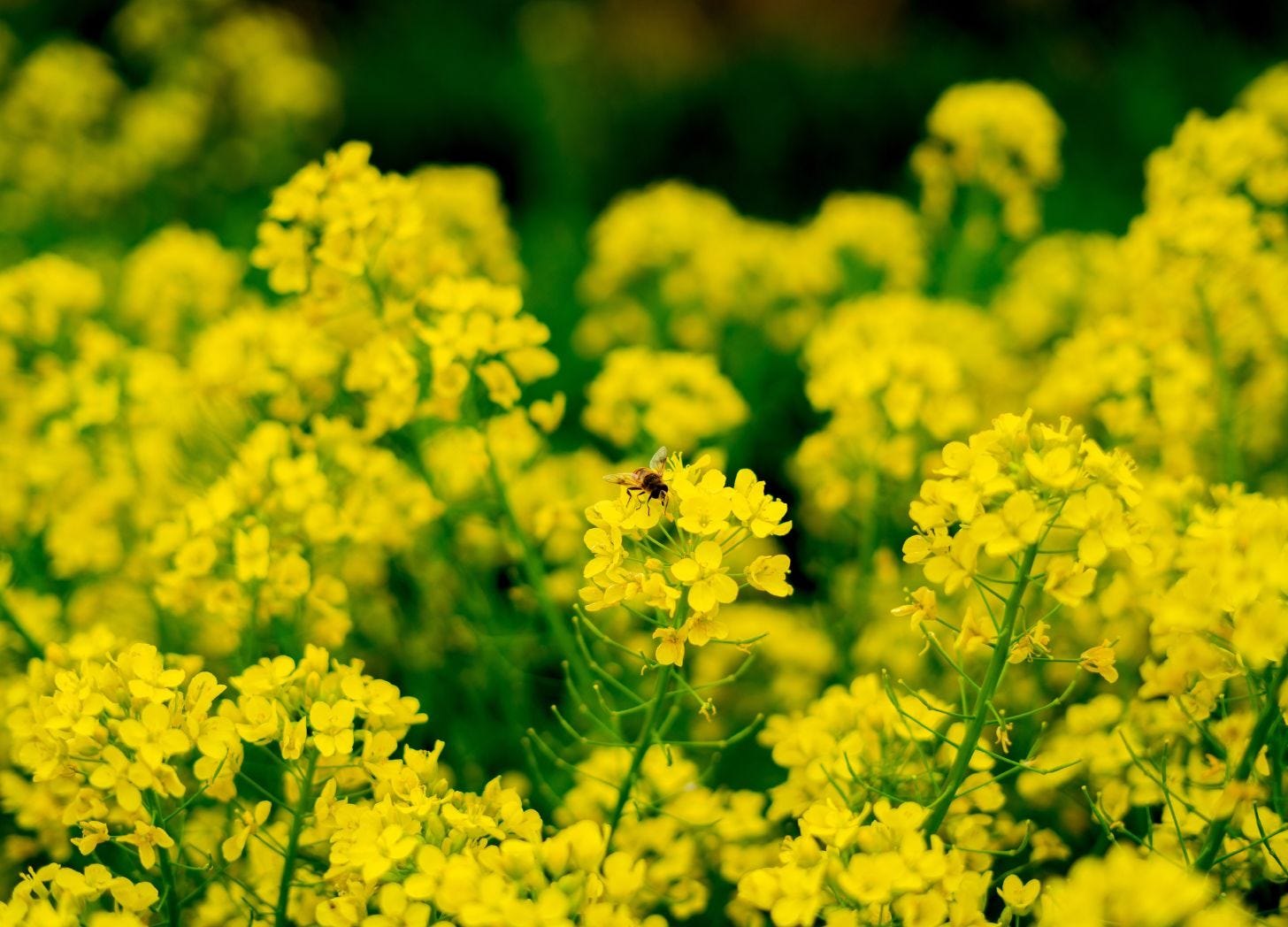
As nature stirs, so too does a quiet sense of renewal. The equinox invites us to pause, to notice, and to give thanks for life—for the trees and flowers in bloom, and for the cycles that carry us forward into a new season.
The Craft of Kayabuki Repair
Only one kayabuki (thatched-roof) house remains in Kamikatsu. Thatched roofs are made using dried vegetation such as straw, reeds, or other locally available materials. In Japan, the thatching process is known as kayabuki and it is designated as an intangible cultural heritage.
Across Japan, many thatched houses are treated like museum pieces—preserved yet untouched. While well-known thatched villages like Miyama and Shirakawago (かやぶきの里) draw visitors from afar, but the kayabuki house in Kamikatsu stands alone—a quiet yet enduring link to the village’s past.
In these renowned villages, thatched-roof restoration is the work of a select group of shokunin (職人)—highly skilled artisans dedicated to their craft. Yet historically, kayabuki was not for the realm of specialists but a shared folk tradition, practiced and sustained by the hands of local people.
In the past, small hamlets like this one in Kamikatsu were filled with kayabuki houses, and neighbors took turns helping each other re-thatch their roofs. In Japanese, the exchange of labor is called temagai. It’s a way of life where time and effort are repaid in kind, creating a shared currency of trust and reciprocity.
Temagai still exists in Kamikatsu in different forms, and I think it’s part of what strengthens our community. Whether it’s harvesting rice, repairing the roof, or cutting the weeds in communal areas, there is an understanding that the help given will one day come back—less like a transaction and more like a gift.
Kayabuki School
This last-standing kayabuki house was previously a private residence, but after the owner’s passing, the family gave it to the local community. In response, the Kamikatsu Thatched School (かみかつ茅葺き学校) was created as a nonprofit organization that offers hands-on experiences in and around the thatched house, ensuring that traditional knowledge is not lost.
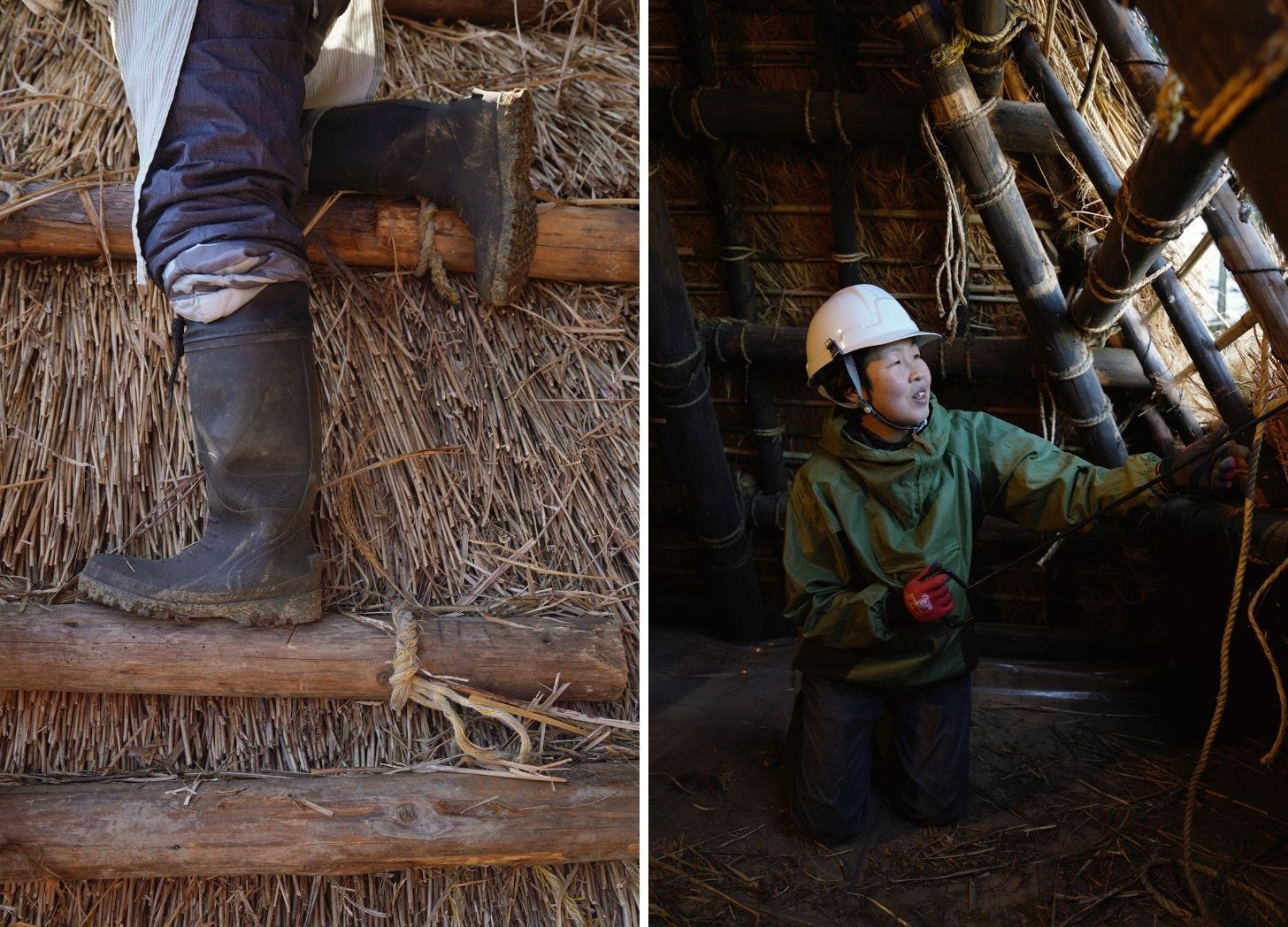
It’s a space for learning, cooking, gathering, and sharing. A place where people can experience satoyama—the interconnected relationship between people and land—while learning about farming, forestry, and rural life.
Keeping the Roof Alive
In these quieter months from late November until late February, local volunteers gather to repair the roof. Thatched roofs don’t last forever as wind, rain, and sun wear them down, and every decade or so, they must be replaced.
The repair process begins in late autumn when the kaya or straw has grown tall. Walking through the fields where we cut the kaya, I am always struck by how tall the stalks grow—far beyond my height. We have to gather hundred and hundred of bundles that first get stored to dry before using as roofing material.
The replacement process itself is slow and careful; first we remove old bundles, trim the straw into a certain length, and secure it in place with rope tied between bamboo planks. I’m amazed as I watch the elders bind the thatch tightly and moved across the thin wooden scaffolding with ease.
For these elders, repairing the roof is more than just maintenance—it’s a way to share their knowledge, experiences, and traditions. Now in their 80s, some can no longer climb the ladders, making it all the more urgent to pass on their skills. Keeping this roof intact isn’t just about preserving an old house. For traditional architecture to be preserved, it must be practiced—it is only through use and care that it truly lives on.
The Future of Kayabuki
With only one thatched-roof house left in Kamikatsu, the community spirit that once surrounded these homes has faded in the way it was in the past, but efforts to preserve the craft persist. The roof continues to be repaired thanks to local elders who still remember the techniques and volunteers eager to learn.
While thatched roofs are often seen as relics of the past, I wonder if they can be reconsidered in the context of sustainability. The house uses entirely natural materials that can be returned to nature, leaving no waste behind. Old straw is used as fertilizer for the fields. With a growing interest in ecological or nature-inspired architecture, could these traditional techniques find a place in modern life?
In a world that often prioritizes speed and convenience, I feel the value of the slow, collective work like re-thatching a roof. For now, I love that this house is still being cared for—not as an ‘old thing', but as a living space where traditions are shared. As the new straw settles in, I hope it remains a place for conversations and as a space to reflect on our relationship with nature.
Have you ever heard of, seen or been inside a thatched-roof house? Have you ever taken part in a communal effort where people exchanged labor instead of money? Let me know your thoughts (I love comments!)
Thank you to everyone who recently became a paid subscriber—I’m so grateful for your support! 🌸 While all posts remain free, paid subscribers have the option to receive seasonal postcards and handwritten letters coming soon!
As a little spring gift, here’s a special offer until April 1! I’ll be sending out postcards featuring spring’s first blooms at the beginning of next month.
Have a gentle & restful weekend,
Kana





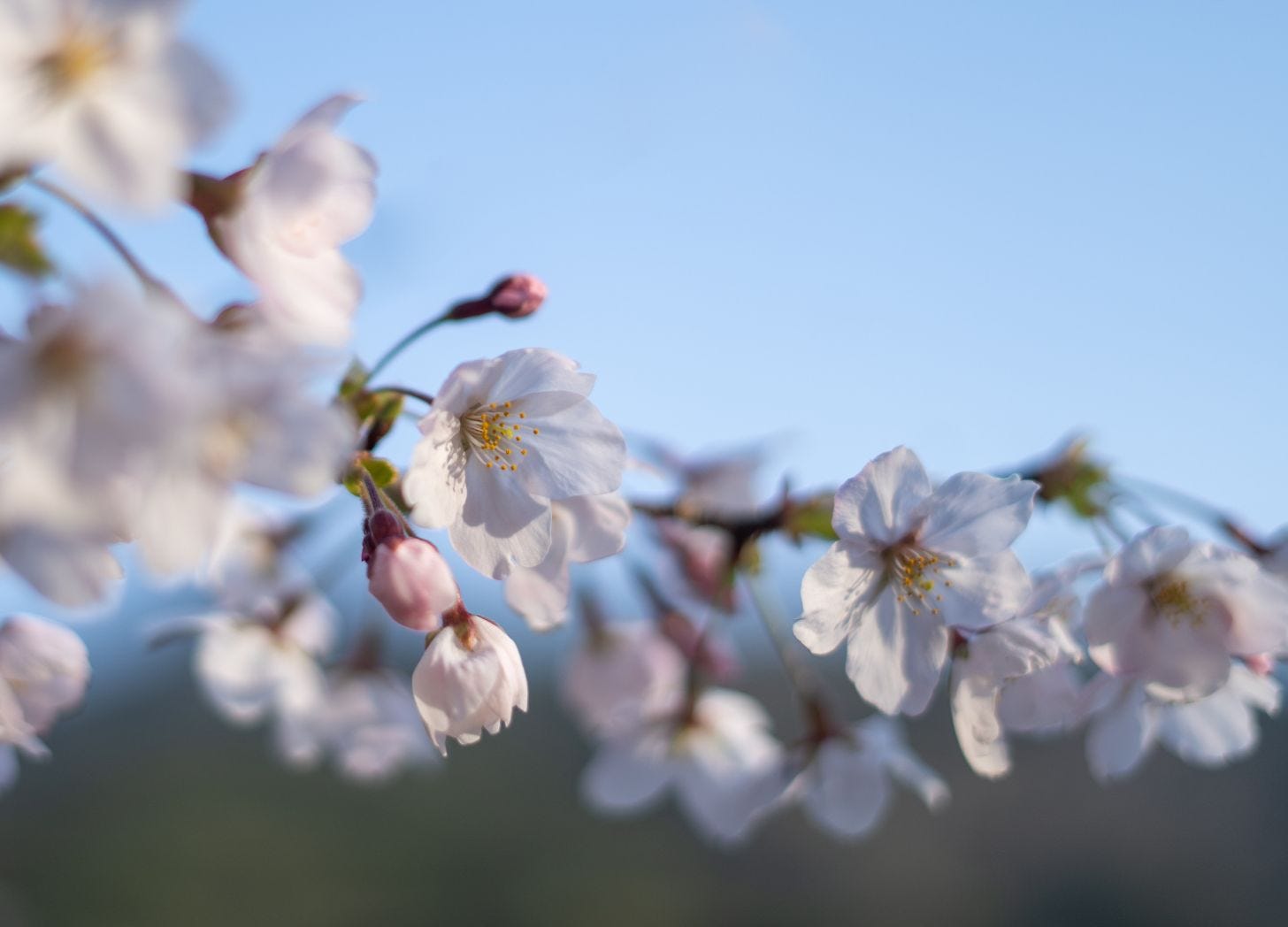

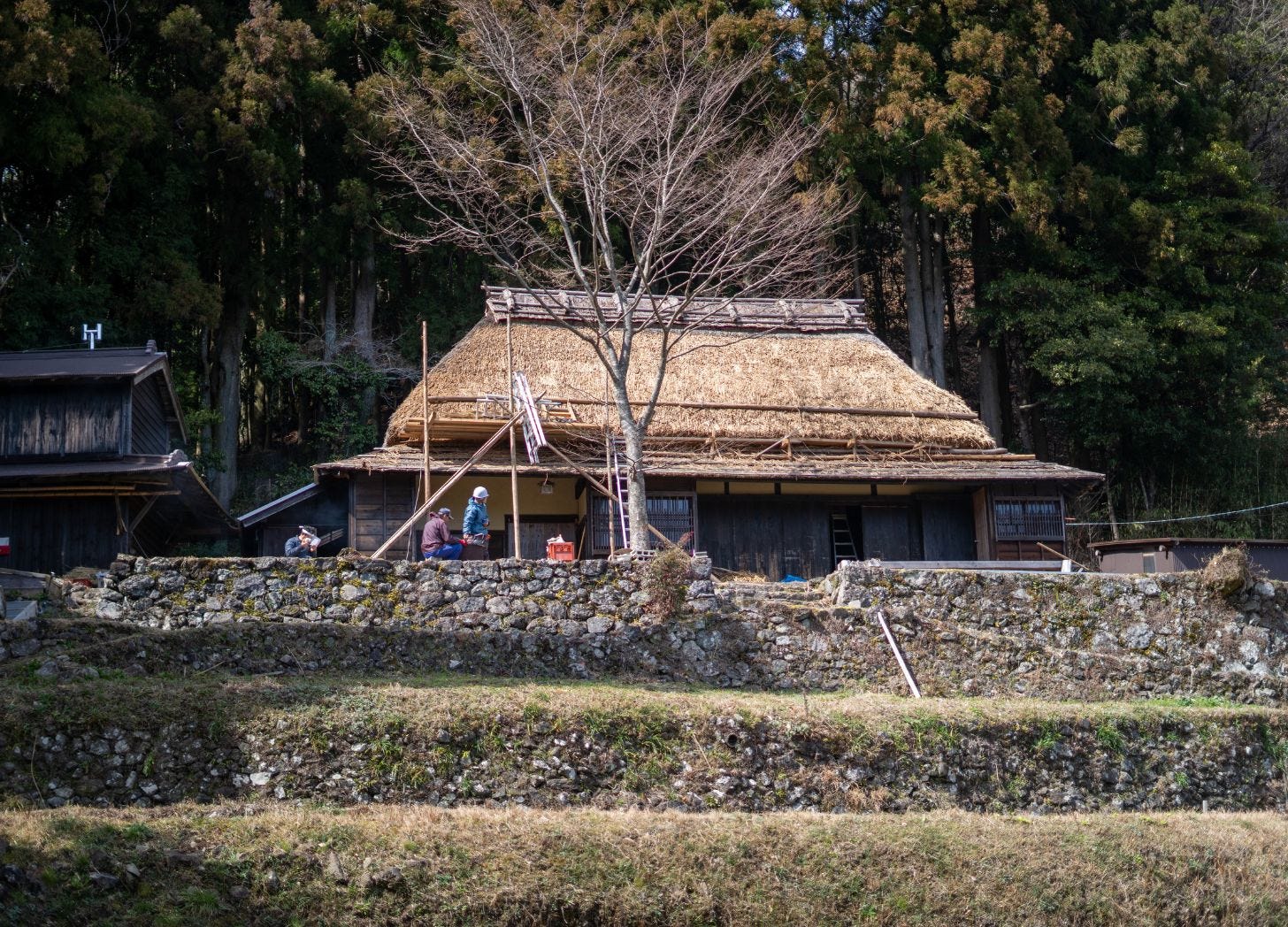
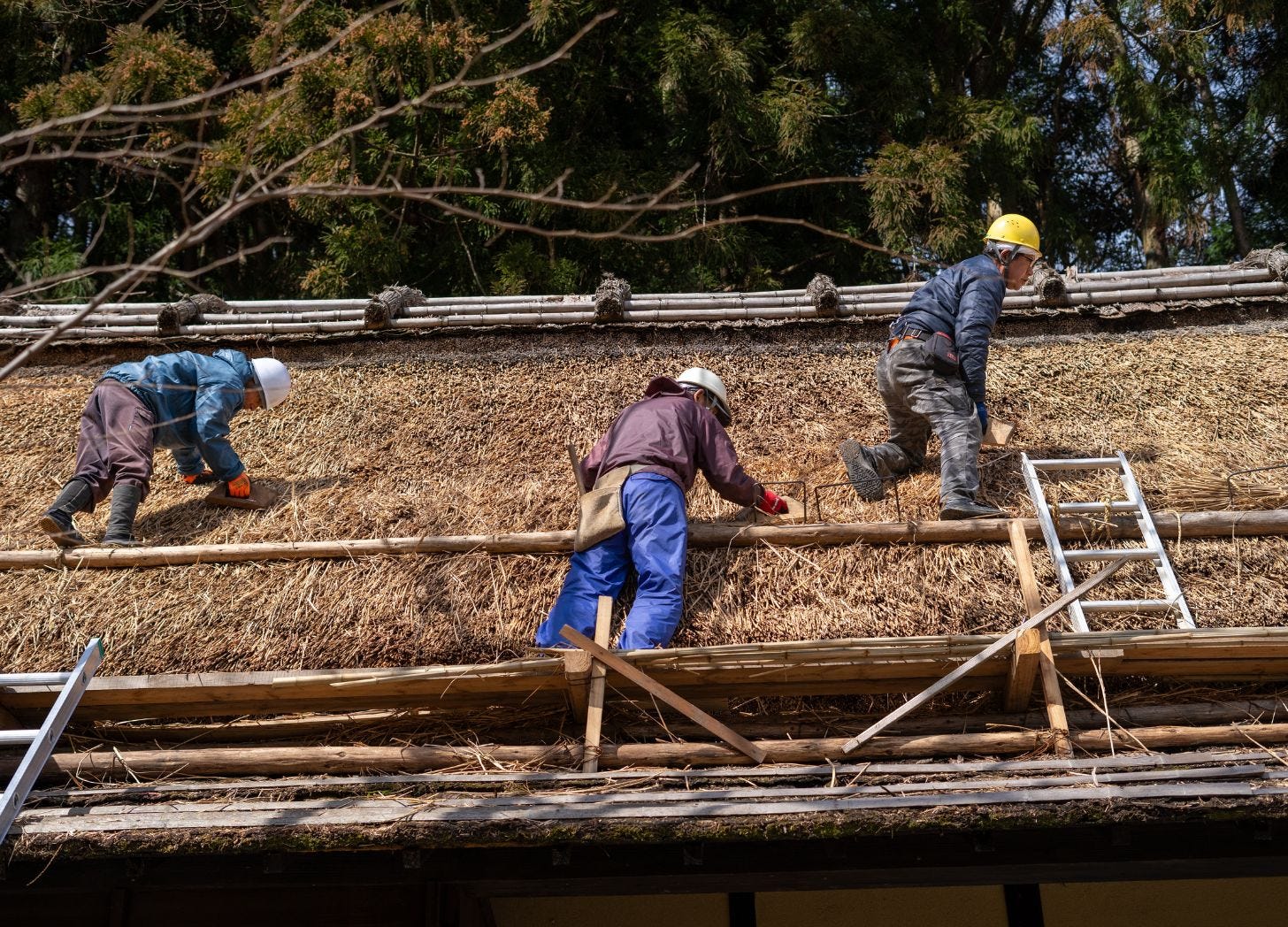
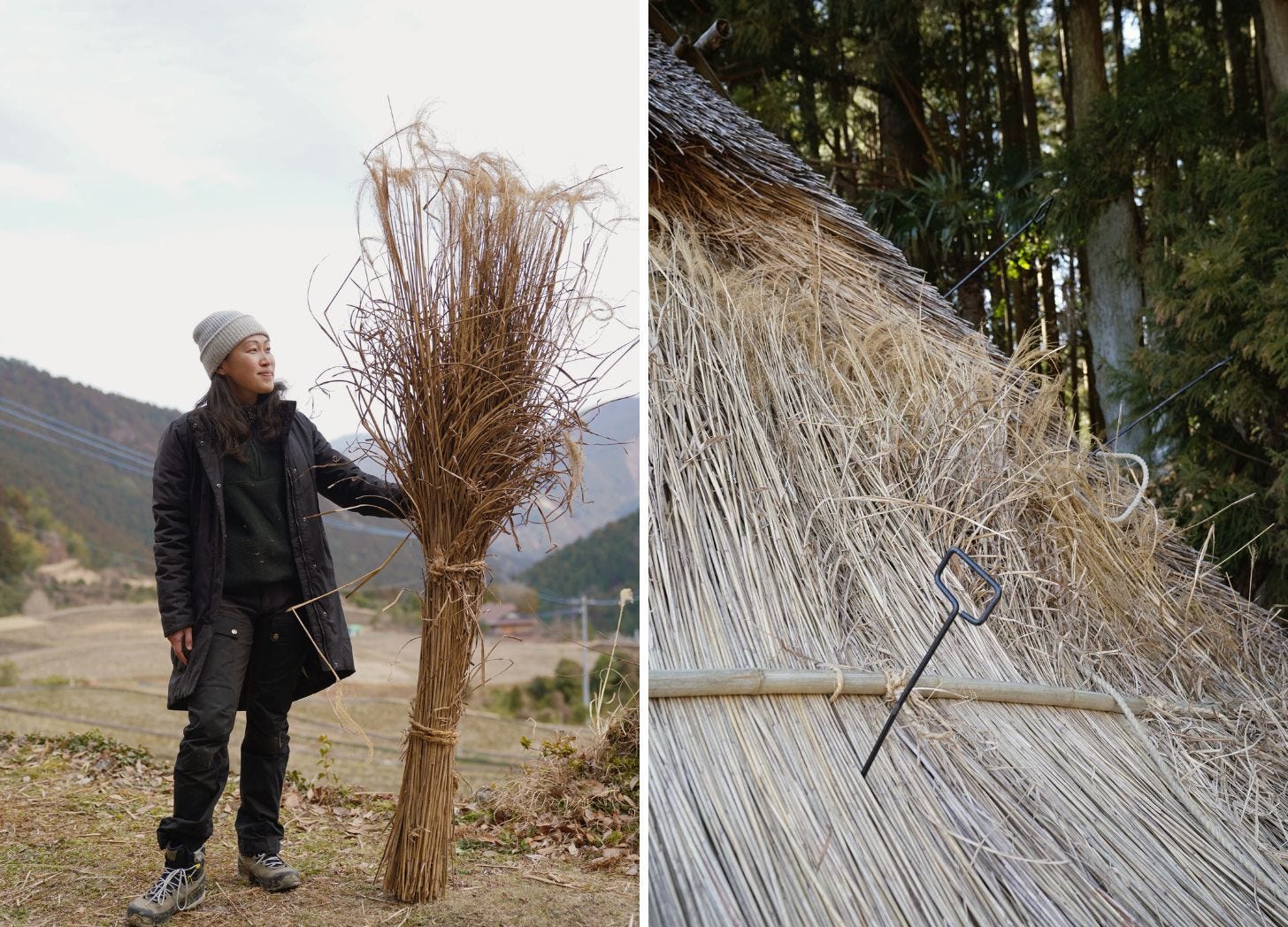
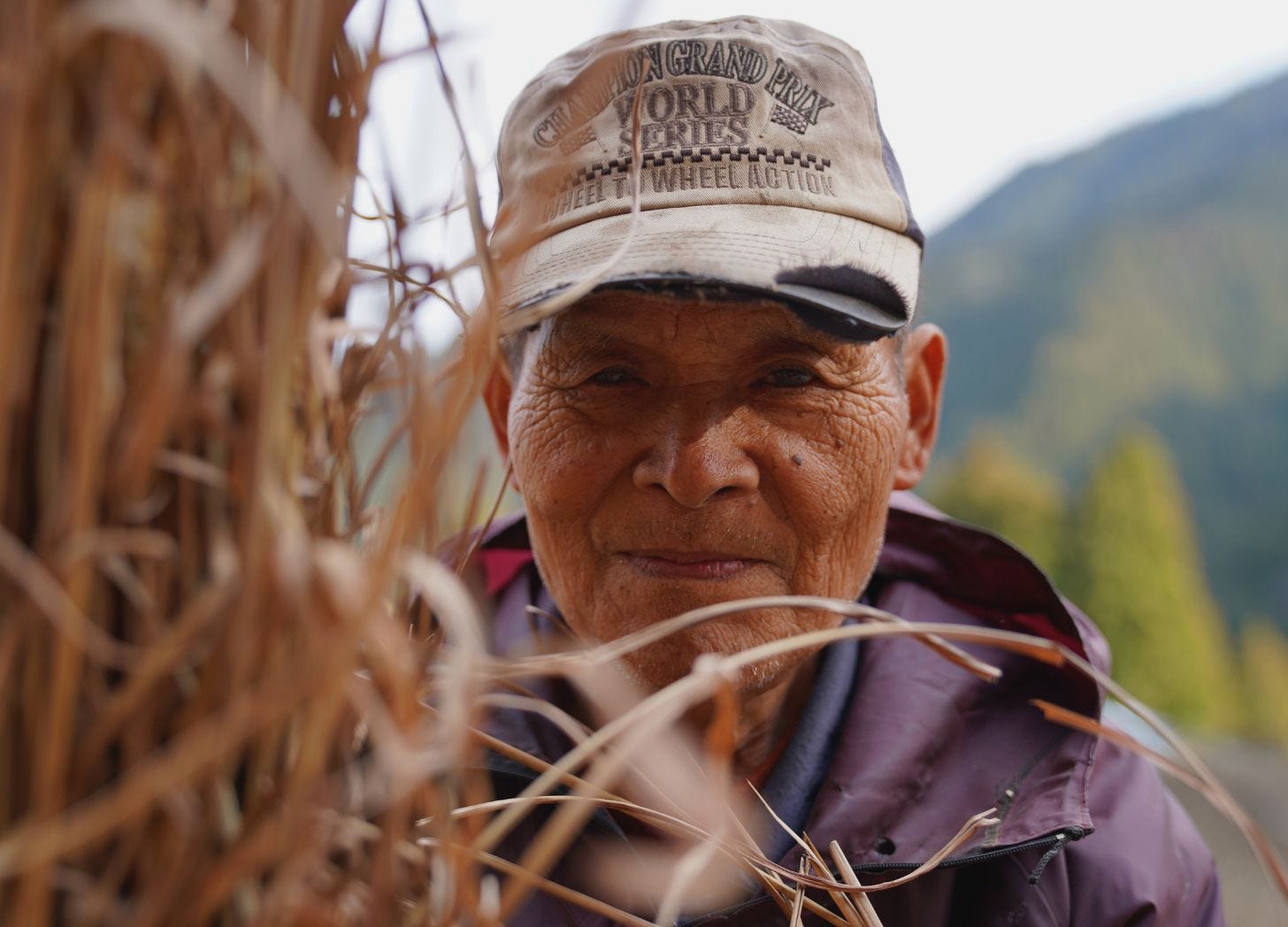
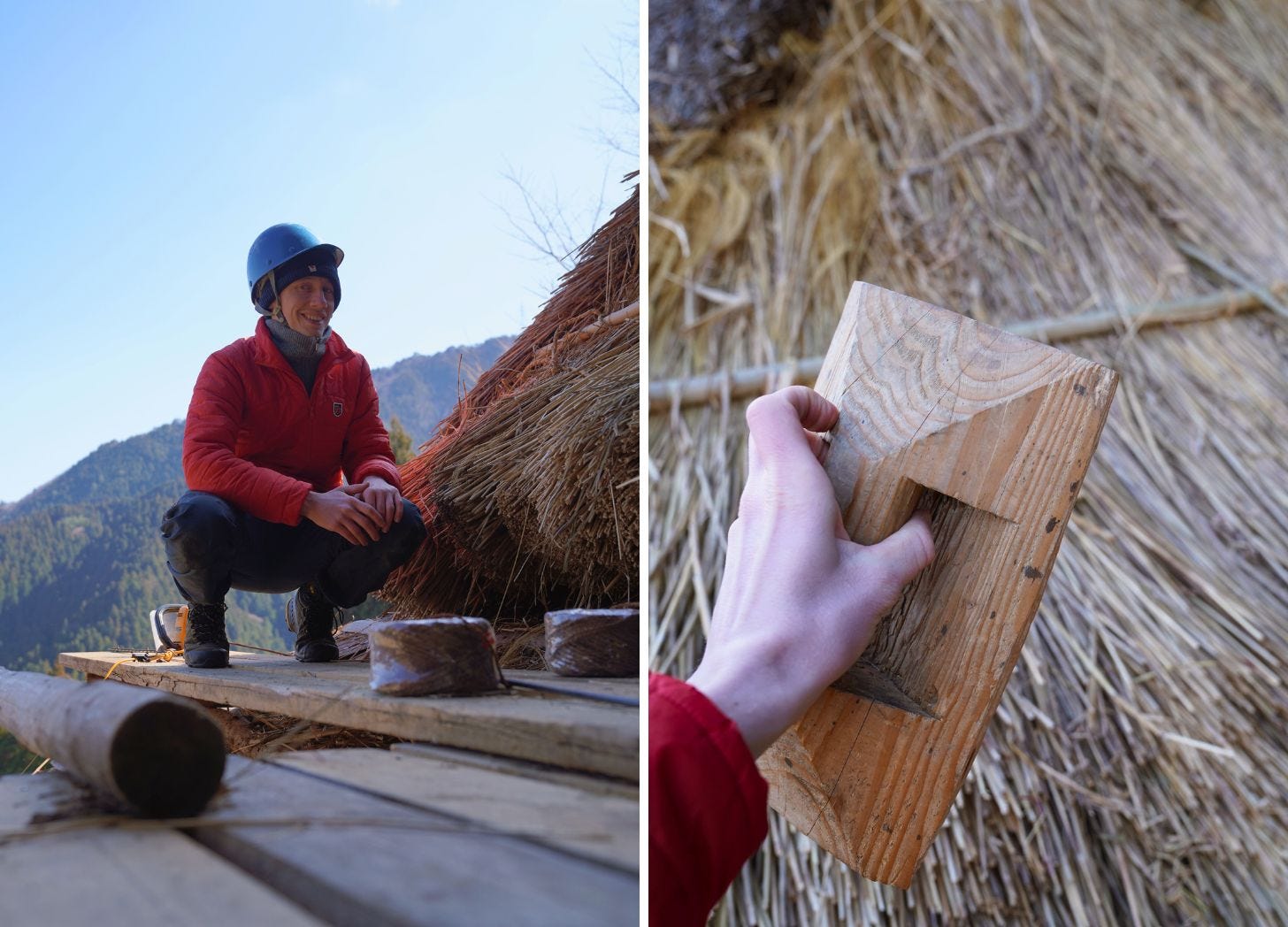
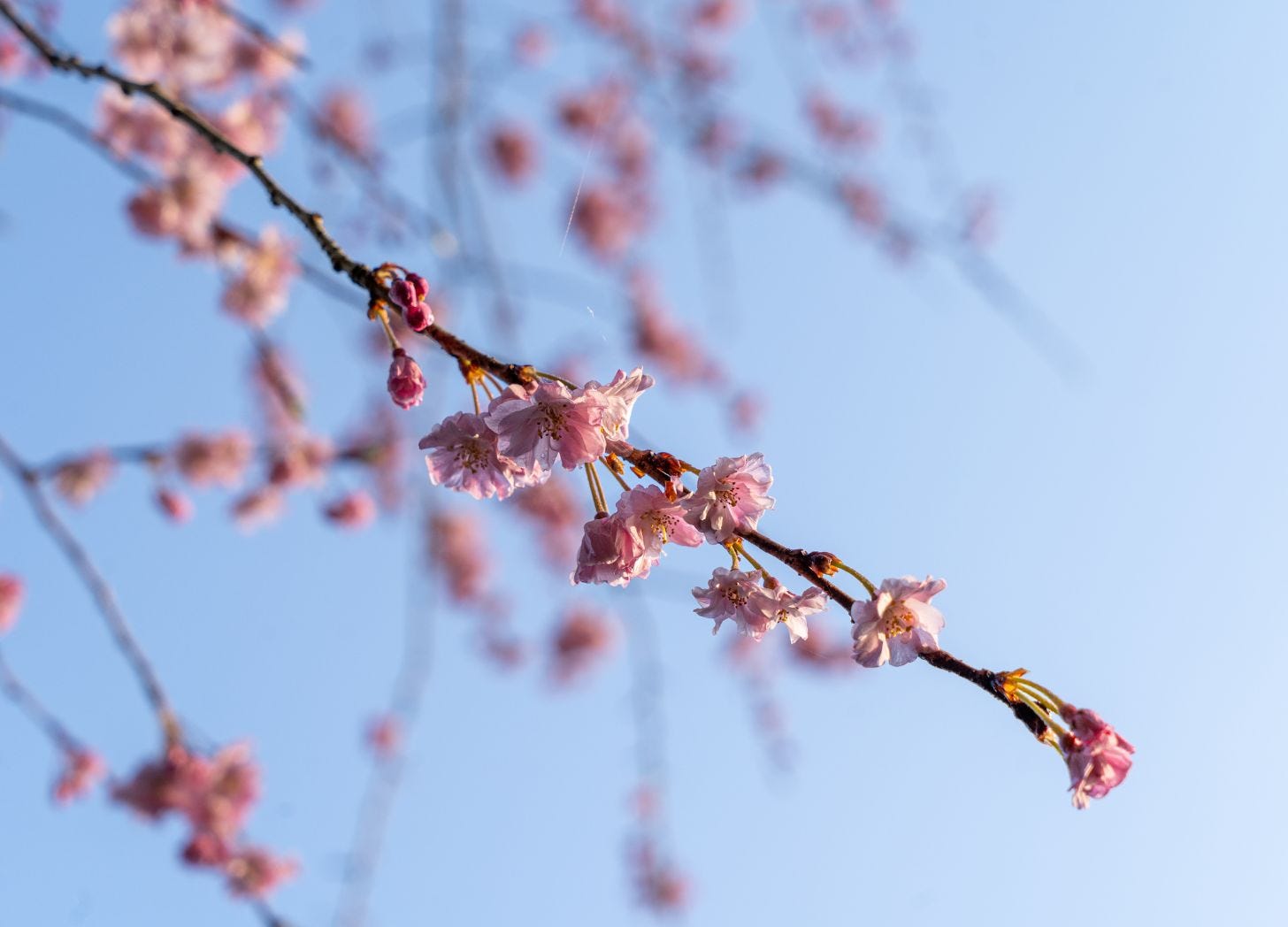
Here we have the concept of jwar. Anyone in the village can call on others to assist with a task, like redoing a floor or cutting grass in autumn, in return for a meal and tea that day, and the expectation that when anyone else calls you show up to help. It’s amazing! And really does keep the spirit of community alive.
It's so wonderful that the tradition continues, thank you for writing about it.